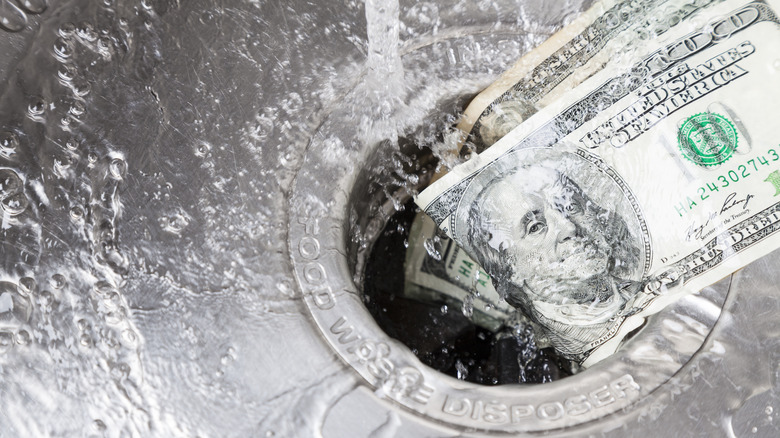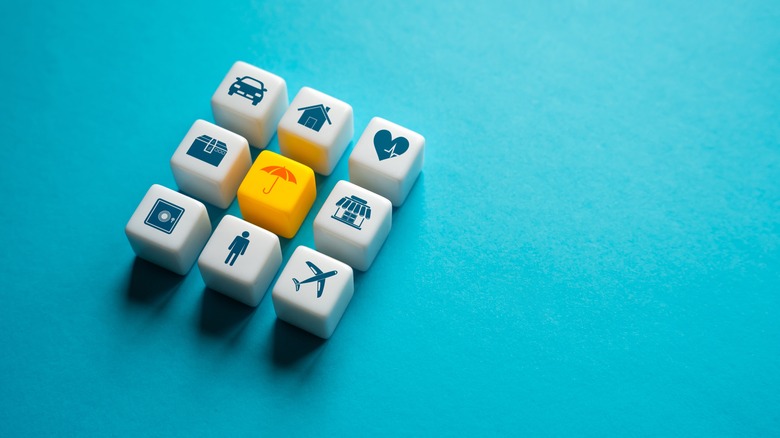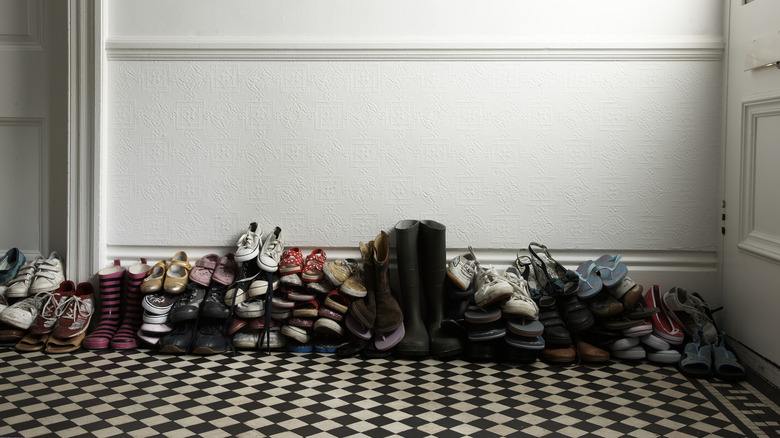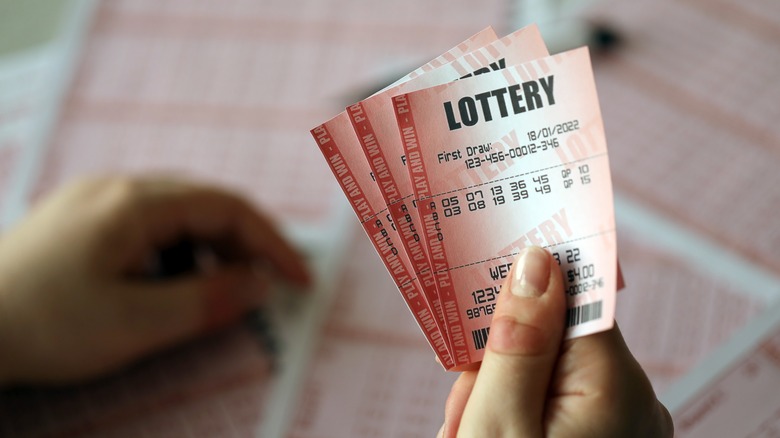The 11 Dumbest Things To Waste Money On
There's something exciting about a little gift to yourself or finally making that large purchase you've been saving up for. Even purchases that don't serve much functional purpose can create this little flutter in a buyer's stomach. Sadly, the rush of getting something new has become a phenomenon that businesses everywhere take advantage of. The consumer culture that has descended upon this world makes it difficult at times to differentiate between a great purchase worth celebrating and a true waste of money.
In reality, Americans dish out a whopping $18,000 on nonessential spending, specifically with $3,768 in average impulse spending every year. A great deal of this outgoing cash flow is used to purchase things with no real value to buyers or no upgrade in value over a more manageable purchase. The result is a wave of wasteful spending across the country that sets even the most diligent budgeters back a step when it comes to planning for retirement, making emergency savings or vacations a priority, and much more. While there are plenty of minute purchases that ultimately erode a budget's overall efficiency, these are some of the most egregious among the dumb things that people waste their hard-earned cash to purchase.
Unused subscription services
Unused subscription services are one of the easiest spending areas to rectify, and yet more than half of all Americans spend money every month on unused subscriptions. These can range from gym memberships to streaming services and priority delivery subscriptions. Across the United States, more than 30% of all subscription accounts go unused with an average price tag of $25.43 per month. The result is more than $300 in wasteful spending every year, on average, that could instead be used to bolster an emergency fund, a retirement account, or simply as additional spending cash to treat yourself in other ways.
The best way to deal with unused subscriptions is to print out your monthly bank account and credit card statements and comb through all of your spending over the previous month or two. Rather than trying to remember the services you've signed up for, your statements will offer a comprehensive picture of what you're spending your money on. Any surprises found on your paper statement can easily be rectified by logging into your account and canceling the service that you no longer need.
A house that doesn't serve your lifestyle
Homes have continued to grow in size over the last few decades. Today, the average home is nearly triple the size that it was 50 years ago. A larger home creates more room for you and your family, including additional discrete spaces to serve as bedrooms, home office spaces, and even activity rooms or dedicated entertainment spaces. Yet, the average family size has almost continually shrunk since 1960, when the typical American household was 3.33 people. Today, the average household is half a person smaller than it was 50 years ago.
In other words, the typical American household doesn't need to be drastically larger today than it was in the past and this increase in size instead comes as a stylistic choice that prioritizes indoor living space over exterior green space. Home buyers have come to expect this shift in property makeup, but the reality is that a larger home costs more upfront to purchase as well as more to maintain throughout ownership. For a single person buying a home or a small family, a large home isn't likely necessary and will only increase the cost of ownership dramatically over the long term. A home that doesn't serve your specific lifestyle drains your bank account unnecessarily and adds financial strain rather than allowing you and your family to flourish. This is known as house poor and is a common mistake that first-time buyers make, in particular.
Unnecessary insurance products
Insurance is an important expense that often can't be avoided. A life insurance policy is a must have financial tool for anyone with a young family or those nearing retirement who want to protect their financial stability and perhaps even create a sizable cash payout for their loved ones at some point in the future. Likewise, car insurance, health insurance, and many other coverage products are simply crucial in the modern world. Drivers cannot operate their vehicles on the roadway without basic coverage, and a medical emergency can leave someone in financial ruin for even the most trivial of operational needs without this security blanket in place.
Even with a well-established understanding of insurance's place in the contemporary financial climate, not all insurance policies are created equal. For instance, if you drive an old car that isn't worth much, then adding collision insurance to cover the cost of repairs on your vehicle isn't likely to be very beneficial. You'll spend more on insurance premiums to maintain coverage with this add-on, and if you are in an accident the car may end up being a write-off after even a minor collision. Likewise, a life insurance policy for your children isn't generally a valuable use of financial resources. Instead, investing in a 529 plan or something like a living trust for yourself to create mobility for your young family members are better options.
A new car
New cars are far more expensive than used vehicles. Auto loan payments on new cars average about $200 higher than those for used ones in the current marketplace, not to mention the increased price tag and therefore much larger volume of interest attached to the loan. The truth is that very few drivers need a new car. A used vehicle with a solid history of routine maintenance and no accidents can act as a fantastic means of transportation without the same exorbitant price tag attached. Used vehicles don't have to be old or ugly, either. A luxurious ride can be found in either type of purchase, making used vehicles a great option for virtually every buyer in the market for a new car (to them).
Moreover, after evaluating your budget and coming up with a maximum number you're able to spend every month on car payments (it's recommended that roughly 10% of your budget should go toward transportation, for reference), you may be surprised to see what's available in a dealership's preowned catalog at the same price point as the newer cars you can afford. There's just far more buying power inherent to shopping in the used marketplace. A larger vehicle, one that offers a more elegant ride, or something with amazing fuel efficiency can be found at great bargain pricing when purchased second-hand.
Shoes (specifically in large quantities)
On the one hand, shoes are a must-have item for everyday life. But it's easy to end up with too many pairs of shoes, resulting in wasteful spending on any new footwear that you choose to purchase. Generally speaking, you'll want a pair of casual shoes, a more formal option, perhaps a pair of exercise sneakers, and maybe one or two other pairs of specialized footwear (like hiking boots or sandals). Of course, personal requirements may dictate more than one option in any of these categories or the addition of other shoe types, but everyone's needs will be different.
Generally, women tend to have more shoes than men, with an average of 19 pairs versus men's 12. One reason for the increased number is that women also tend to wear their shoes for longer each day than men and therefore require both better quality footwear and more of it. Still, these average numbers are far greater than the functional requirement for a typical lifestyle. Even with a bit more leeway to account for matching various styles, shoe buying still shouldn't be as rampant as it seems to be for the average consumer.
Limiting the number of new pairs of shoes you purchase can be a great way to save a noticeable amount of money. With the average shoe price hovering around $75, even reducing your spending on footwear by one pair per year can make for a significant improvement to your budgetary math.
Online (or in store) purchases that you forget to return
Return policies have become increasingly generous, leading many people to buy additional color options or sizes when shopping online — as well as in physical stores. More benevolent return policies might seem like a generous act. Companies may adopt lengthy return windows partially to create new brand loyalty among customers who appreciate the little things in a consumer relationship. However, the reality of return habits among buyers points to another reason, or at least an additional one.
Buying items to return unwanted extras runs into a bit of a problem when looking at actual consumer behavior. 91% of online shoppers rarely or never return things that they bought (granted, this is often because they're satisfied with purchases), according to an NPR/Marist poll from 2018. But 56% of people reported specifically that they have failed to send back something they wanted to return. This means that more than half of people who shop online — which is nearly everyone in the modern marketplace — have purchased something that they didn't intend to keep, only to waste money by keeping the item anyway. In another vein, 39% of people surveyed noted that a favorable return policy influenced their buying decisions, making the convergence something that overwhelmingly benefits sellers at the consumer's expense.
Advanced degrees without a plan for using them
According to U.S. Census data, over 4 million people were enrolled in graduate school in 2018. This is a roughly 8% increase over enrollment at the start of the decade and is accompanied by a general decrease in undergraduate enrollment across the same period. College students increasingly feel that their education is inadequate when it comes to finding and securing their dream job.
This relative feeling of weakness in the job market leads many to seek continued education as a way to bolster their resume or to stave off the transition from learner to earner. This can be a scary jump into the world of working and the accompanying increase in responsibility. But enrolling in a master's program just because you don't know what to do next can be an expensive mistake. Graduate school costs an average of $35,700 per year, substantially adding to the total student debt you'll have to repay. A master's degree can be an enriching collegiate experience. Continued education beyond the undergraduate level is far more focused on self-guided exploration of a hyper-focused topic and is a great way to create a level of expertise for yourself. But if you're not going to use the knowledge and skills developed during a master's program then you're likely wasting money in an effort that only stalls the inevitable transition into the job market.
Eating out at restaurants
Restaurant food is one of the worst things that you can leverage your money to buy. It's nearly five times more expensive to eat out at a restaurant than to cook at home, and the average American household (including single occupancy residences) racks up a $3,600 restaurant bill every year. There is of course a social component involved in the decision to eat at a restaurant, but if you find yourself ordering takeout or heading to your favorite establishment on your own regularly, then a change may be in order.
In certain circumstances, the time-saving ability of a takeaway meal can act as a viable trade-off, this is something that people like Mark Cuban advocate for. However, the value of this trade diminishes greatly with increased usage and lax standards for occasions that dictate when to fall back on the expense. No matter what your typical restaurant habits look like, there's a good chance that you're overspending on meals. Even cutting out one visit for lunch or dinner every month can make for a dramatic change in your ongoing budget that will quickly add up to great savings over the year.
Lottery tickets
Lottery tickets are a bit of an odd purchase. Almost no one buys a lottery ticket genuinely expecting to win the jackpot, and many people only purchase tickets when the potential winnings cross some gigantic threshold that isn't just life-changing but rather Earth-shattering ($1 billion versus $1 million, for instance). There's little point in advising against buying a lottery ticket under these circumstances, but habitual buyers are wasting their money purchasing tickets for multiple draws a week or month. The chances of winning the lottery are virtually nonexistent, which is why the jackpot occasionally reaches up into these astronomical figures as non-winning draws string together in an ever-increasing pool of prize money.
Similarly, scratch cards can be a fun stocking stuffer around the holidays or a nice little addition to a card for a friend or family member. However, the odds of winning with enough regularity to break even or even earn a small profit are stacked against routine buyers. These types of lottery purchases are essentially a gamble with terrible odds. Cutting down on all types of lottery purchases or relegating them only to unique occasions can keep the dream of winning big alive without wasting money.
In-game purchases
Mobile game apps and even standard console games have become a pit of internal purchasing ecosystems. Mobile games are particularly rife with in-game purchase offers and a constant cycle of video ads that disrupt the flow of gameplay or interject themselves in between every level or stopping point. These games then offer to remove ads for a small fee alongside a marketplace full of in-app purchases that can improve the character's aesthetic in some way or speed along progress on an evolutionary tree or upgrade list.
Some games also advertise in-game currencies that can be used to make purchases toward progressing the character's arsenal, attributes, or set of moves. These currencies don't tend to be transferable and are therefore only useful in the game that they correspond to. This makes them far less valuable than the cash used to buy them, and if your interest in the title wanes after making a purchase, there's no way to recoup the money you've spent. In-game purchases, whether designed to help create faster progress or to reduce the irritation intentionally built into a game's system, are virtually always a waste of money and should be avoided.
Bottled water
Bottled water might come as a surprise. Often, bottled water can be found in grocery stores and gas stations for relatively low prices, making their purchase seem like just a bit of change added to an existing transaction. Hydration on the go is certainly an important necessity so justifying the $1 bottle of water added to your shopping cart or gasoline purchase doesn't seem like a big deal. But water can be marked up by nearly 2,000 times when sold in this bottled format versus traditional tap water. The price increase is truly gigantic for a natural resource that everyone on the planet relies on for survival.
Perhaps even more shocking than the inflated price tag is the reality that many bottled water companies simply run tap water through a purifier or some other kind of filtration process and stick it on the shelves claiming the water to be superior and therefore worth the prices they charge. Moreover, placing low-cost water bottles on the shelf next to premium prices makes the marked-up tap water appear to be a great bargain when in reality the product is still a price gouge.











